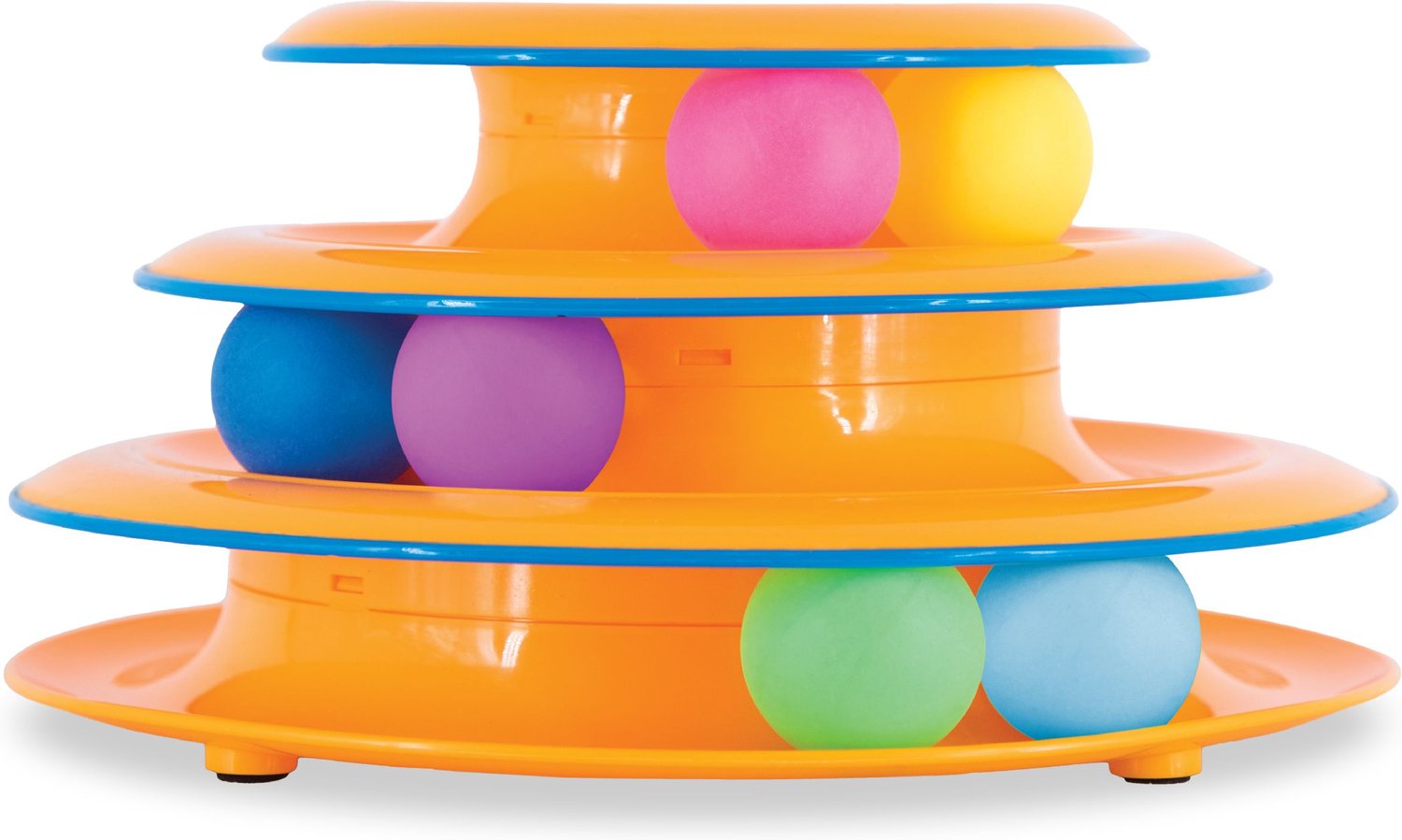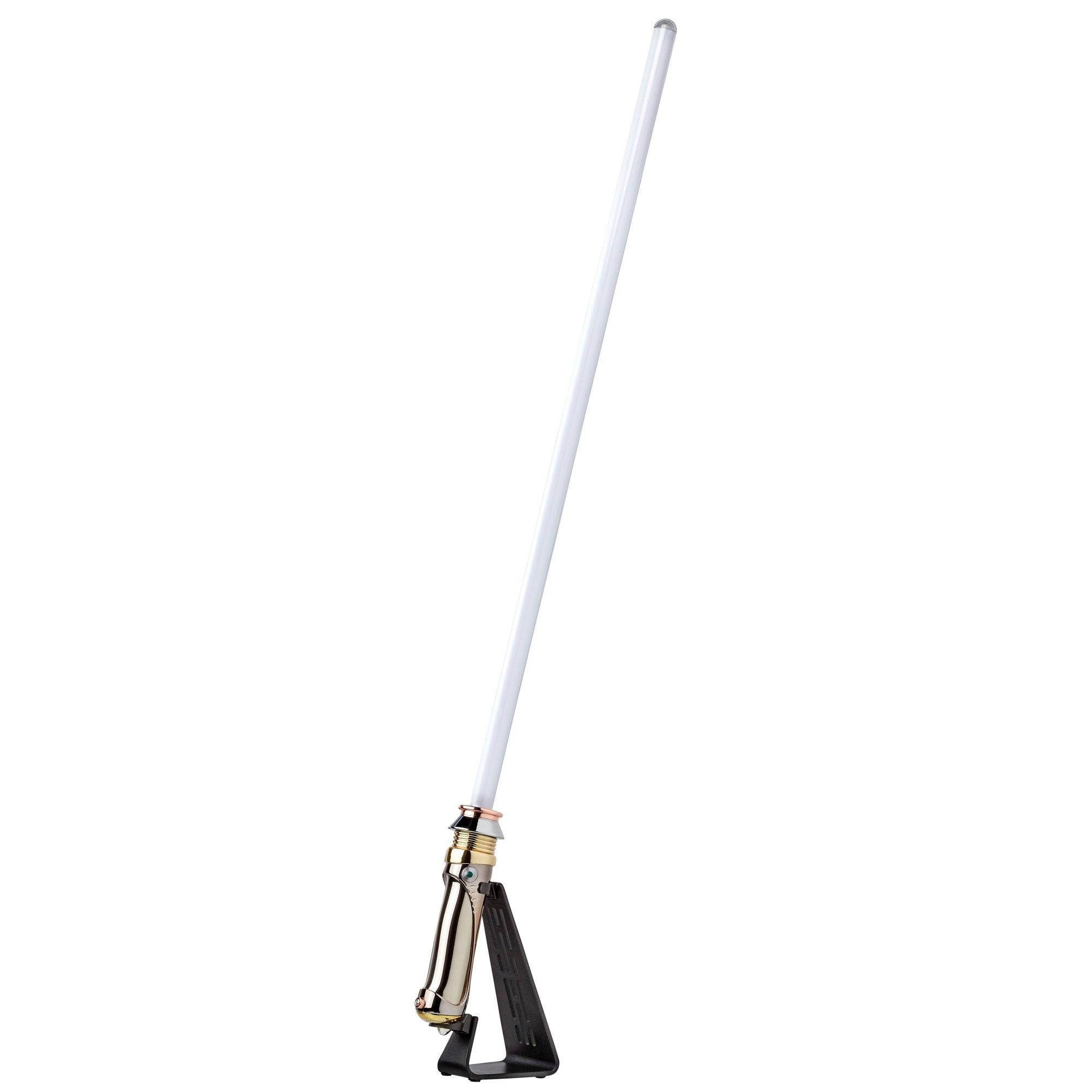Petstages Tower of Tracks Cat Toy
This interactive cat toy is designed with 3 levels of tracks and 3 brightly colored moving balls to attract kitty’s attention! Your cat will adore batting, swatting, and pouncing the bright colored balls as they engage their natural instincts to hunt. Whether you have one cat or more, the Tower of Tracks will keep your furry friends enticed with bright colors and spinning balls.
our kitty will never lose another ball under the couch with the Petstages Tower of Tracks Cat Toy. With three exciting levels, this interactive toy encourages extended playtime as the colorful balls spin and roll around and around. It’s great for multiple-cat households and independent play because it lets cats enjoy an action-packed afternoon even when you’re not at home. The stacked play station is built to last and features non-skid pads so it won’t move about as your kitty plays.
Key Benefits
- Durable toy consisting of three levels of exciting play, each level includes its own circular track and ball
- Non-skid pads keep track from sliding around as cats bat and play
- Spinning and rotating action of the balls entices cats to play
- Great fun for a single cat or multiple cats
- Measures 10″ diameter x 5″ high
As with any product, supervise your pet’s use of this toy. Inspect product regularly for rips or tears and remove toy if damaged or if parts become separated, as injury could result. Intended for pets. Keep out of reach of children.
Additional information
| ITEM NUMBER | 98978 |
|---|---|
| DIMENSIONS | 10 x 5.5 x 10 inches |
| WEIGHT | 9.6 ounces |
| BRAND | Outward Hound |
| LIFESTAGE | Adult |
| TOY FEATURE | Exercise |
| MATERIAL | Polypropylene |
The cat (Felis catus), also referred to as the domestic cat, is a small domesticated carnivorous mammal. It is the only domesticated species of the family Felidae. Advances in archaeology and genetics have shown that the domestication of the cat occurred in the Near East around 7500 BC. It is commonly kept as a pet and farm cat, but also ranges freely as a feral cat avoiding human contact. Valued by humans for companionship and its ability to kill vermin, the cat's retractable claws are adapted to killing small prey such as mice and rats. It has a strong, flexible body, quick reflexes, and sharp teeth, and its night vision and sense of smell are well developed. It is a social species, but a solitary hunter and a crepuscular predator. Cat communication includes vocalizations—including meowing, purring, trilling, hissing, growling, and grunting—as well as body language. It can hear sounds too faint or too high in frequency for human ears, such as those made by small mammals. It secretes and perceives pheromones.
Female domestic cats can have kittens from spring to late autumn in temperate zones and throughout the year in equatorial regions, with litter sizes often ranging from two to five kittens. Domestic cats are bred and shown at events as registered pedigreed cats, a hobby known as cat fancy. Animal population control of cats may be achieved by spaying and neutering, but their proliferation and the abandonment of pets has resulted in large numbers of feral cats worldwide, contributing to the extinction of bird, mammal, and reptile species.
As of 2017, the domestic cat was the second most popular pet in the United States, with 95.6 million cats owned and around 42 million households owning at least one cat. In the United Kingdom, 26% of adults have a cat, with an estimated population of 10.9 million pet cats as of 2020. As of 2021, there were an estimated 220 million owned and 480 million stray cats in the world.
A tower is a tall structure, taller than it is wide, often by a significant factor. Towers are distinguished from masts by their lack of guy-wires and are therefore, along with tall buildings, self-supporting structures.
Towers are specifically distinguished from buildings in that they are built not to be habitable but to serve other functions using the height of the tower. For example, the height of a clock tower improves the visibility of the clock, and the height of a tower in a fortified building such as a castle increases the visibility of the surroundings for defensive purposes. Towers may also be built for observation, leisure, or telecommunication purposes. A tower can stand alone or be supported by adjacent buildings, or it may be a feature on top of a larger structure or building.
A toy or plaything is an object that is used primarily to provide entertainment. Simple examples include toy blocks, board games, and dolls. Toys are often designed for use by children, although many are designed specifically for adults and pets. Toys can provide utilitarian benefits, including physical exercise, cultural awareness, or academic education. Additionally, utilitarian objects, especially those which are no longer needed for their original purpose, can be used as toys. Examples include children building a fort with empty cereal boxes and tissue paper spools, or a toddler playing with a broken TV remote. The term "toy" can also be used to refer to utilitarian objects purchased for enjoyment rather than need, or for expensive necessities for which a large fraction of the cost represents its ability to provide enjoyment to the owner, such as luxury cars, high-end motorcycles, gaming computers, and flagship smartphones.
Playing with toys can be an enjoyable way of training young children for life experiences. Different materials like wood, clay, paper, and plastic are used to make toys. Newer forms of toys include interactive digital entertainment and smart toys. Some toys are produced primarily as collectors' items and are intended for display only.
The origin of toys is prehistoric; dolls representing infants, animals, and soldiers, as well as representations of tools used by adults, are readily found at archaeological sites. The origin of the word "toy" is unknown, but it is believed that it was first used in the 14th century. Toys are mainly made for children. The oldest known doll toy is thought to be 4,000 years old.
Playing with toys is an important part of aging. Younger children use toys to discover their identity, help with cognition, learn cause and effect, explore relationships, become stronger physically, and practice skills needed in adulthood. Adults on occasion use toys to form and strengthen social bonds, teach, help in therapy, and to remember and reinforce lessons from their youth.
A toymaker is the name of someone who makes toys.






by Zean
I am the owner of a very outgoing and energetic 4 year old small cat. She is very attentive to her house of humans, but still needs some “kitty” time. I reccomend this toy because she loves to randomly go to the stack and attack the balls, often getting multiples to spin at once. She often loves to do this when I am napping in the same room, so I reccomend placing it in a room you do not sleep in as it can make a bit of noise depending on the adrenaline of your cat during attacks. I also reccomend a snake toy, catnip, Temptations variety pack, and the Chewy box it will arrive in so your cat has a hangout for all of his or her new shenanigans.
by Amanda
I work in an animal hospital & we often foster young kittens & this has been especially useful with them! It’s an interactive toy that several kittens can play with at once & it really brings them out of their shells & raises their confidence levels, all while exercising their hunting instincts. It’s a simple, hard plastic toy so it can be easily washed or wiped down & you can even switch out the balls if they prefer jingle balls. So far all of the standard cat sized balls I’ve tried have fit & it allows you to switch it up. 🙂
by Franklin
This is a classic toy for cats. It’s interactive too. You can play along with your cat flipping the ping-pong sized balls back and forth. It’s freakishly colorful and I am guessing that is part of it’s appeal to felines. Years ago, I had a similar cat toy and it was also orange and looked similar. This is an awesome value and built well with a flexible polymer that will not fracture. It’s a space saving toy for others in its class. I highly recommend it for not only your cat(s) but for fun interactive play with your pal(s).
by Frizzle
The open box was tried out first! All eyes were on me while I played with the tower as the 3 cats just cautiously watched. Curiosity got the best of the youngest and newest kitty in the middle of the night. When the two 4 year old sisters thought no one was in the room, eventually and sophistically gave it a whirl or two. The cats are mostly outdoors but when stuck inside, they all continue to take swats now and then.
by Alexis
Recently purchased this after adopting two stray kittens. We already had an older kitten (7 months) and a 3-year-old cat. I didn’t really think any of them would play with this, but I was fortunately wrong. Two of them immediately started playing with it and I had to teach the other two and now they play with it all the time. I saw some people saying their bigger cats couldn’t play with this, but our big cat (over 10 pounds) totally can.
by Bite
My kitten, 3.5 months old, loved it at first. He had fun trying to figure out what was going on. What I loved even more about this item is that I can remove the ball from the tower and have him chase it for awhile–light as a ping pong ball so super hard to catch. It’s great! He’s a very curious and playful one, so I need to get him new toys to keep him entertained. This one still keeps him going every now and then, but not too long in terms of time–oh well. But he clearly enjoys it when it’s out.
by Ember
My cat is really picky, and I was afraid she’d turn up her nose at this toy, as she has with every other I’ve bought her. But not this one! She played with it constantly for several hours Christmas morning. She also seems to enjoy looking through the hole in the top of the tower, as if trying to figure out the workings of the machine. She also likes to try to get the balls off the track, to no avail, of course. The designer of this toy made it a real winner.